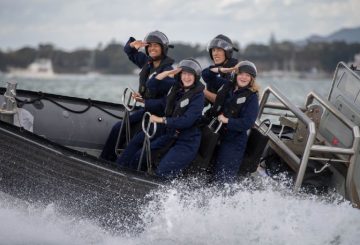Hệ thống đèn giao thông Covid-19 của New Zealand đã kết thúc. Tính đến ngày 13 tháng 9, không còn cần phải đeo mặt nạ ở nơi công cộng, ngoại trừ trong môi trường chăm sóc sức khỏe và chăm sóc người già (như bệnh viện, hiệu thuốc và cơ sở dân cư cho người cao tuổi).
Nhiệm vụ vắc-xin của chính phủ cũng sẽ kết thúc vào ngày 26 tháng 9.
Thủ tướng Jacinda Ardern xác nhận rằng những thay đổi cũng bao gồm:
- Nhữngngười kiểm tra dương tính với Covid-19 vẫn phải cô lập trong bảy ngày, nhưng các tiếp xúc trong gia đình không còn cần phải cô lập nếu họ làm xét nghiệm RAT mỗi ngày.
- Cácnhiệm vụ vắc-xin sẽ được gỡ bỏ đối với du khách đến.
- Tấtcả người New Zealand trên 65 tuổi, và Māori trên 50 tuổi, sẽ được tiếp cận tự động với thuốc kháng vi-rút Covid-19 nếu họ xét nghiệm dương tính với Covid-19.
Ardern nói rằng mọi người vẫn có thể được yêu cầu đeo mặt nạ ở một số nơi, nhưng nó sẽ tùy theo quyết định của từng địa điểm, chứ không phải là một yêu cầu của chính phủ. Yêu cầu tiêm chủng cũng sẽ tùy theo quyết định của người sử dụng lao động.
Bà thông báo rằng 40.000 khóa học thuốc kháng vi-rút Covid-19 đã được mua. Những điều này sẽ được cung cấp miễn phí cho người New Zealand lớn tuổi. Cô nói rằng thuốc kháng vi-rút có hiệu quả nhất trong giai đoạn đầu của việc nhiễm virus.
Ardern cũng thừa nhận rằng việc giảm hạn chế có thể gây ra mối lo ngại cho người tàn tật và suy giảm miễn dịch.
“Tôi muốn trấn an những người Kiwi rằng chúng tôi đang thực hiện những thay đổi này bởi vì rủi ro thấp hơn, trên thực tế, các trường hợp thấp hơn 10 lần so với những gì họ đã ở trước đó trong năm và bây giờ chúng tôi đã có các lớp bảo vệ tại chỗ.
“Tôi biết sẽ có những người quan tâm đến những thay đổi được thực hiện ngày hôm nay. Tôi có thể đảm bảo với bạn rằng chúng tôi sẽ không làm cho họ nếu chúng tôi không tin rằng chúng tôi đã sẵn sàng,” cô nói.
“Lời khuyên về sức khỏe gần đây nhất hiện nay cho chúng ta biết rằng với những ca bệnh và bệnh viện thấp nhất kể từ tháng Hai, dân số của chúng tôi đã được chủng ngừa tốt, và mở rộng tiếp cận với các loại thuốc chống virus, New Zealand đang ở vị trí để tiến lên phía trước.”






























































